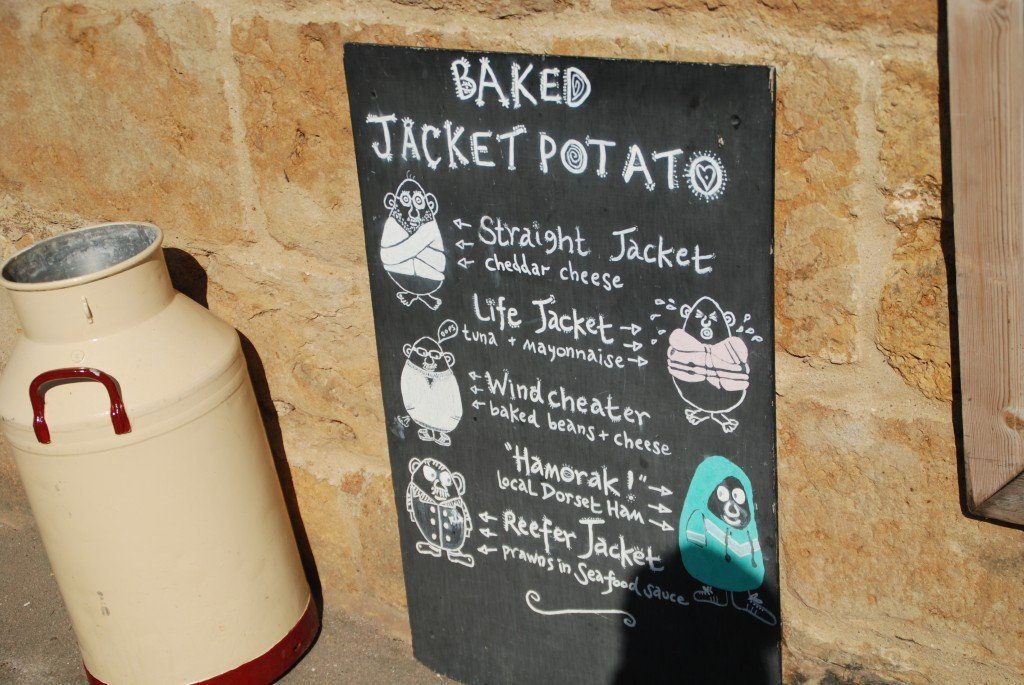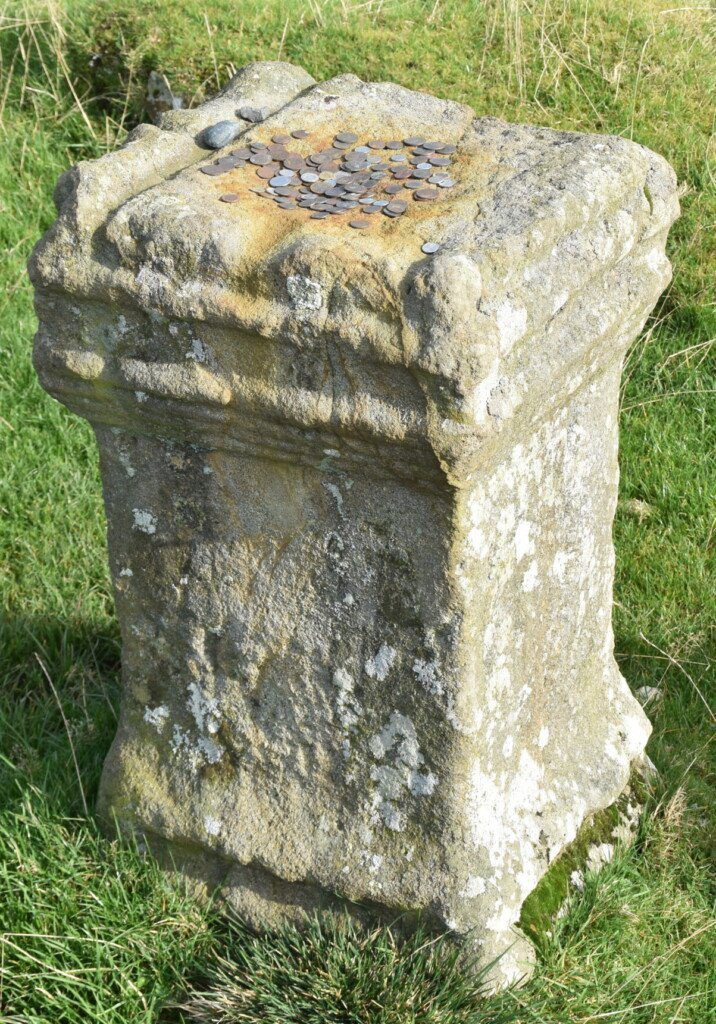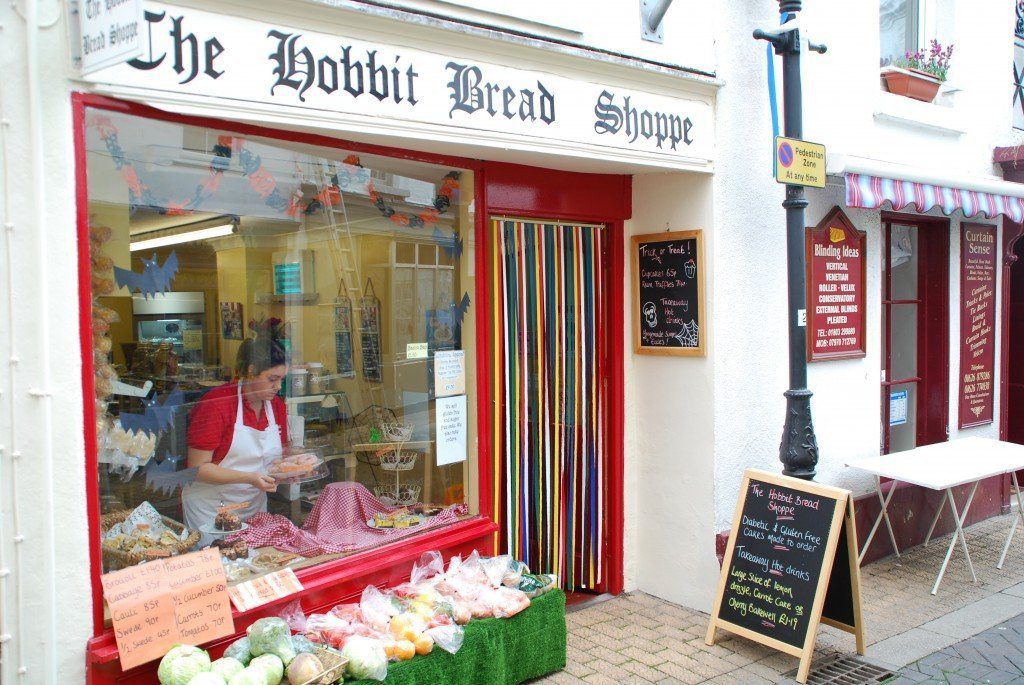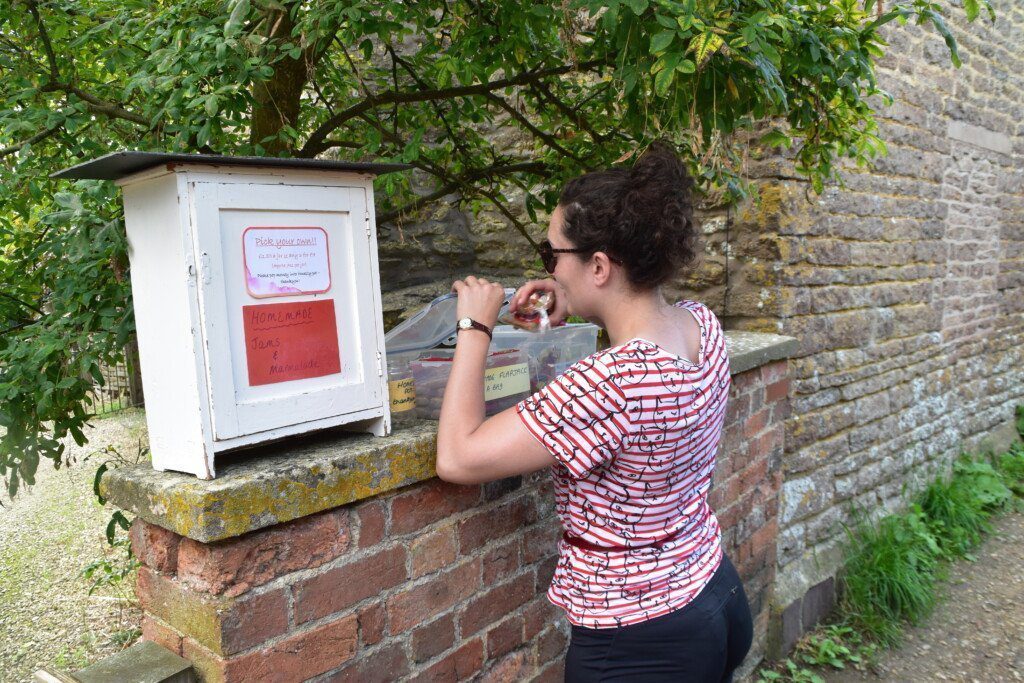How much does a British hike cost?
According to the guide books that we write, the average daily spend on a hike is as follows:
If camping: Campers can survive on £12-15 per day if using the cheapest sites, cooking all their food themselves, foregoing the chance to visit tourist attractions, pubs, cafes etc – and generally having a miserable time of it. Assuming that you have the occasional drink or meal in a pub, the true figure is more likely to be £20-25 per day.
 If staying in hostels: those relying on the hostels you can easily double the above figures, even if the hostels do have self-catering facilities to enable to you cook or yourself. Around £35 is the minimum budget if you have the occasional bar meal and a drink or two. Eating out more frequently? Bump that up to £45-50 per day.
If staying in hostels: those relying on the hostels you can easily double the above figures, even if the hostels do have self-catering facilities to enable to you cook or yourself. Around £35 is the minimum budget if you have the occasional bar meal and a drink or two. Eating out more frequently? Bump that up to £45-50 per day.
If staying in a B&B: I think that £60-80 per day is about the average spend if you are staying in B&Bs (and assuming you’ll be eating out all of the time too) – though this can easily rise to an average daily spend of above three figures.
The above figures are only a very rough guide and will vary enormously, depending on several factors, including:
- when you are walking (your budget during a summer holiday will be much more than if you’re walking out of season),
- whether you are walking by yourself (walking with someone is often cheaper),
- which trail you have chosen,
- how long you take to complete the trail,
- whether you want to visit ay tourist attractions or historical sites along the way (particularly pertinent on the Hadrian’s Wall Path)
- … and so on and so on.
But do these (admittedly very approximate) figures bear any resemblance to reality? Well, let’s have a look at what I’ve spent on some of my hikes and we can draw some conclusions from there:
How much do I spend on the trail?
It always makes my eyes water when, at the end of the tax year, I calculate my total spend for a walk. Because the bottom line is that I seem to spend a lot more on my hikes than the figures above suggest I should.
Let’s look at the three hikes that I completed in 2018.
I spent £427.98 for 14 days on the Pennine Way, £1178.26 for 10 days on the Cotswold Way, and £742.36 for 15 days on the Cleveland Way.
That works out at £30.57 per day on the Pennine Way, £49.49 per day on the Cleveland Way and a whopping £117.82 per day on the Cotswold Way. (All figures exclude the transport costs of getting to and from the trail.)
There are two obvious questions prompted by these figures:
- Why is there such a big variation between the trails?
- Why are they so different (and bigger!) than the estimates provided at the top of this page and given in the guide books?
In answer to the first question, the higher daily price for the Cotswold Way is in part due to the fact that the Cotswolds are a more expensive part of the country than the Pennines. But perhaps more pertinently, my partner Zoe joined me for the first part of this walk. And, unlike me, she has standards, and doesn’t want to wild camp. Nor is she happy going for a day or two without a shower. So for all these reasons the daily cost on this walk is higher.
Similarly, for the Pennine Way, it was just me and my dog, we indulged in a fair bit of wild camping, the north of England is famously cheaper than the south – and the trail itself is more remote, so there are fewer places where you can actually spend your money.
So I think, on balance, the Cleveland Way’s average of a fraction under £50 per day is probably the most useful average.
But this is still double the daily budget we estimate for campers at the top of this page and in the guide book.
So are my figures typical? And is this what you can expect to spend when you’re walking on one of these trails?
Well, maybe, maybe not. On the one hand, in some areas I actually think I spend less than most people; but in other areas I spend more.
For example, I like to camp (as long as the weather’s good), which obviously saves me some money. Indeed, for the past few years I’ve really started to enjoy wild camping, effectively reducing my accommodation costs to zero for much of the walk.
I also like to carry my own luggage, so I don’t pay for baggage-carrying companies to carry it for me.
On the other hand, I probably spend more than most people on these trails because of the following:
- I probably spend more than most people on food. I don’t like cooking for myself when I’m camping. I find it takes up too much time, and I don’t like carrying food, cooking equipment etc. But I also think that eating in cafes during the day, and pubs in the evening, is one of the joys of hiking – and an essential part of the whole experience.

Altar standing in the corner of a farmer’s field on Hadrian’s Wall. The altar is original Roman, the financial offerings, however, are not. But no matter how parlous your finances, please don’t top them up with coins from here.
(Of course, as I am almost invariably working on a guide book when I walk, so I also have a duty to eat in as many places as possible for ‘research purposes’. But I would be lying if I said this was the reason why I ate in a lot of cafes. Researching’ is just my excuse for being a glutton, not the reason.)
2. On that subject, because I am researching for a guide, so I probably spend more than most people on public transport, because I sometimes have to retrace my steps in order to complete or check my work.
3. I also think that having a dog can increase the cost of a walk. Hostels don’t, as a rule, allow dogs, and one’s choice of B&Bs is also limited. So if I decide not to camp, I may have to spend more on my accommodation. Dogs also push up the overall cost because of the incidentals – food, poo bags etc – that you may need to buy on the way.
4. Finally, when I’m researching these guide books I am usually doing so on my own (plus the dog, of course). Travelling by yourself will usually cost more if only because you are liable for every expense – staying at a B&B is cheaper per person if there’s two of you, for example.
So while my budget is likely to look very different to yours, I think that, overall, the areas where I spend less may balance out those areas where I spend more.
In other words, perhaps your daily budget won’t differ too greatly from mine. Mine is probably a little excessive due to the amount of times I eat in cafes and pubs. But not excessively so,
And I think that perhaps in the next edition of these guides we need to revise the budget estimates upwards by £5-10 per day for every category.
Anyway, I’d be interested to hear your experience, and whether your daily budget is similar – or very different – to mine.
Example: my budget for the Cleveland Way
Below I have printed the budget for one of my walks. It includes both expenditure that occurred beforehand – for example, on trains/buses to the start of the walk, and back at the end – as well as the daily spend when on the trail.
This budget is an honest reflection of what I spent. Just ask the taxman – because these are the same figured that I declared to HMRC.
As you can see, I actually took two trips to complete the trail and my research. Break wasn’t planned – just need to return home because my elderly mum had a fall. On that first trip I was accompanied by my partner Zoe, our son and Daisy. On the second trip it was just me and the dog.
So the second trip will have a lower per day expenditure, as mentioned above, as Zoe has standards, and we needed to make allowances for our four-year-old child too.
On both occasions we didn’t take public transport but drove up to the moors from our home south of London near the south coast.
Like I say, in many ways this daily budget will differ enormously from yours: it’s doubtful you’ll eat in as many places as I do, and I doubt you’ll need certain supplies – exercise books, correcting fluid – that I bought along the way for my work, and which I have itemised below.
Anyway, I don’t know if it will be of any use to anybody – but I’ll reproduce it anyway, in the hope that it is:
Conclusion
Well as you can see, even though I wild camped a lot on the trail, I still was spending around £30 per day, and the high spend at the start of the trip when I was with my family pushed the overall budget up to almost £50 per day.
I think the main lesson to be drawn from this particular trip – and it’s one that I draw from every trip I take – is that it’s surprising how quickly things add up. That even when I think I haven’t spent that much in a day, I still end up around £30 poorer at the end of it than I was at the start.
The other conclusion I draw is that these figures don’t really matter. Indeed, I can’t imagine that I would keep a daily account of my expenditure normally; it’s just that I need to in order to show the taxman should he request them.
But other than that they’re unimportant. Because I love walking, it’s perhaps my favourite pastime – and so as long as the budget is bearable then I am happy with the amount I’ve spent.
How to save money on your walk
If it comes as a bit of shock to you to discover how much a hike may cost, your next question will probably be something about how you can reduce that budget to something slightly less terrifying.
Here are a few tips I’ve picked up down the years.
Try to avoid high season, ie the school holidays. Following this advice will probably save you more money than any other item on this list. Going before the summer holidays is not a bad idea; after the summer holidays – when people have made their profits for the year and are more content and relaxed – is probably better still.
If you are flexible, try to start your trip on a Sunday. It is well known that this is the cheapest time to stay in hotels (it’s their quietest night), and it follows that by starting on a Sunday you’re minimising the number of Friday and Saturdays you’ll have on your hike (which are the most expensive times to stay at some hotels, and when many other options – B&Bs, hostels and even some campsites – are booked out).
Book your train tickets at least 12 weeks in advance because it’s cheaper then. Just as importantly, instead of buying tickets for the whole journey, try buying tickets for its constituent parts instead. For example, if you’re going from London to Carlisle and the train travels via Manchester, you may well find it cheaper to buy one ticket for the leg from London to Manchester and then one for Manchester to Carlisle. This practice is known as ‘splitting your ticket‘. Note that even though you’ll get two tickets, you don’t actually change trains; you just do the exact same journey as you would if you didn’t split your ticket. If it sounds like a lot of unnecessary faff, the size of the saving may make you change your mind. What’s more, there are various websites that do the hard work for you. Try Mytrainpal or TrainTickets.com, or just do a search online. Note that none of these sites is ideal – sometimes their split-ticket results aren’t available on mobiles, or they charge a small fee; but the savings can be massive if you’re willing to make the effort.
Buy your lunch from a supermarket rather than eating in cafes. They’re the perfect place to pick up picnics, allowing you to eat (cheaply) along the way; these wayside lunches are often amongst the most memorable times on a trail too.
If you’re willing to stay at Travelodges, Premier Inns etc then book well in advance – it’ll save you money. It’s worth signing up to get their emails too, which often have offers attached. For campsites and hostels, if you’re travelling in high season then again book early, just to be sure of a place
Plan your day in advance, particularly if those plans involve public transport. Arriving in time to catch the last bus will cost you a lot less than having to take a taxi.
If you can eat your dinner early in the evening, some pubs offer cheaper ‘happy hour’ meals, usually between 5-7pm.
Don’t bring too much kit. It will only slow you down (and more time on the trail means more money being spent), or you’ll end up posting it home, which will again cost you time and money (and it’s a faff!)
Thames Path, Cotswold Way, Ridgeway and the North Downs and South Downs Way are reckoned to be more expensive than other trails; avoid these trails if you’re looking to save money.
This one may sound too extreme for most people but, well, I do it: if you’re in a pub at the end of the day, ask for a separate glass of water with your pint. Not only is it free, but it’s better for you – and you’ll be less tempted to have a second pint! What’s more, it also reduces the risk of your waking up with a crashing headache.
AirBnB is no longer the bargain it once was. So while it’s always worth checking out the site, don’t assume a place will be cheaper just because it’s on their website.
Last, but not least, do remember that this is your holiday, so don’t be too miserly. If your happiest memory of your adventure was not some fabulous panorama that you savoured, but the time you managed to secure a half-price scotch egg from Greggs, you may want to recalibrate your attitude for the next hike.


